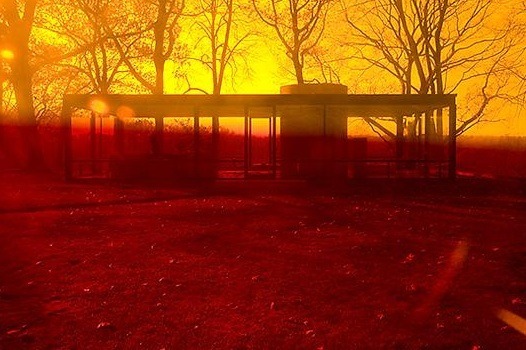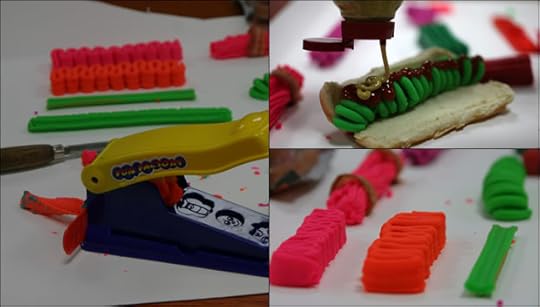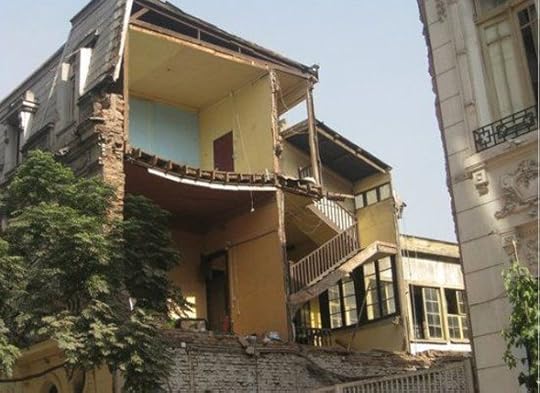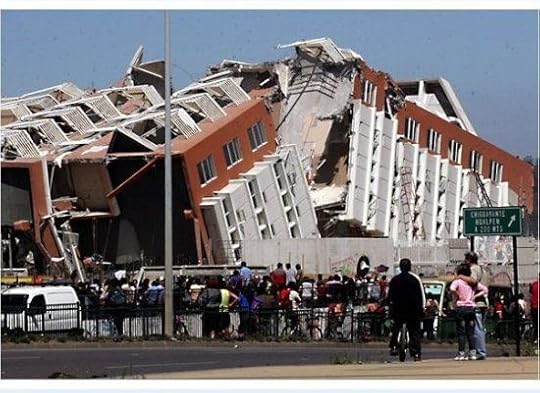David Lidsky's Blog, page 4852
March 1, 2010
Staining the Glass House: James Welling Colors in Philip Johnson's Masterpiece

Modernist architect Philip Johnson's Glass House, located in New Canaan, Connecticut is known for many things, but color is not one of them. The structure's angular black steel beams and glass walls renders it almost invisible, allowing the Connecticut countryside to slip seamlessly into the house itself, swallowing up the interior.

Inspired by the possibilities offered by such an iconic, minimal, yet easily-manipulated subject, photographer James Welling allows us to see the Glass...
Print Is Dead, Long Live Print: Digital Magazines Have Publishers in a Spin

Time Inc, Hearst, Condé Nast, Wenner Media and Meredith magazine publishers have banded together to promote their print editions in a "power of print" ad campaign. But let's do the Time Warp again, and remember digital mags really are the future.
The "power of print" campaign is due to be announced today, and it cost some $90 million and constitutes 1,400 ad pages. What may be the major placement is a two-pager featuring Michael Phelps, with the tag line, "We surf the Internet, we swim in...
Coffee Industry Hit Hard by Climate Change

The latest industry to get clobbered by climate change is coffee, according to the International Coffee Organization (ICO). The organization, which represents 77 coffee-producing countries, says that the temperature has risen half a degree in coffee-producing countries over the past 25 years--five times faster than in the previous 25 year period. That change has led to a panic among countries reliant on coffee.
In a meeting this week between coffee producers in Guatemala, roasters expressed...
Work Smart: Three Ways to Use Google Wave in Your Business

Google Wave is an exciting new tool that combines the best features from email, instant messenger, forums, and wiki's into a single interface. In Wave, a group of people can simultaneously edit the same document in their web browser in real-time. That means that you can watch your co-workers' cursors type keystroke-by-keystroke on your screen as they work. Wave is flashy and full of potential—but what can you actually use it for?
Right now your organization's documentation most...
Extreme Makeover, Weiner Edition: RKS Redesigns the Deadly Hot Dog

Last week, the American Academy of Pediatrics called
for the redesign of hot dogs. "If
you were to take the best engineers in the world and asked them to design a
perfect plug for a child's airway, you couldn't do better than a hot dog,"
said Dr.
Gary Smith, former chairman of the AAP's Committee on Injury, Violence, and
Poison Prevention. "When it's
wedged in tightly, that child is going to die." Never ones to resist a challenge, or the
chance to play with our food, we...
Iceberg Breaks Off From Antarctic Glacier; Should We Replace It With an Artificial One?

Is it time to start thinking about replacing disappearing icebergs? A massive iceberg that recently split off from Antarctica's Mertz Glacier might be a driver of future climate change. The Luxembourg-size iceberg (965 square miles) broke off from the larger glacier, which is a massive floating ice tongue that drains ice from the larger East Antarctic ice sheet.
While scientists can't say for sure that the event is linked to climate change, they believe that it could eventually affect ocean...
Megacities Today, Rubble Tomorrow: Haiti, Chile as Architectural Wake-Up Call [UPDATE]
Disasters in Haiti and Chile show architecture is the problem--and the solution--for earthquake-prone cities.

This week in The New York Times, Andrew Revkin published a wake-up call for megacities: Learn from Haiti; you might be next. And the problem is architecture. Earthquakes don't kill people, he says. Buildings do. "In recent earthquakes, buildings have acted as weapons of mass destruction," Roger Bilham, a seismologist who Revkin interviews, wrote in Nature. Most of the buildings in the...
Pew Survey Finds Local TV News More Popular Than Online News; Nation's TV Anchors Relieved

The Pew Research Center's Internet and American Life Project conducted a survey to find out how Americans get their news, and the results are actually a bit surprising at times--especially the fact that both local and national TV news are significantly more popular than online news. And yet somehow, nobody seems concerned about the grave threat local news poses to our venerable institution of online news. Wake up, America! Turn off the TV and read this!
Really, though, almost everybody (92%...
Social Media Responds to Chile's Earthquake: We Can Help

As Chilean and international rescue forces work through the rubble cause by the massive 8.8-magnitude earthquake that hit near Concepcion, Chile's second-largest city, users of social media the world over have undertaken their own rescue measures. Twitter, Facebook, and several of Google's properties aren't trivial, now: they're life-saving, informational tools. An eye-rolling bit of gossip about one of those Kardashian girls can explode through the web in minutes--and now, news about those...
February 28, 2010
Megacities Today, Rubble Tomorrow: Haiti as Architectural Wake-Up Call [UPDATE: Chile]
Disasters in Haiti and Chile show architecture is the problem--and the solution--for earthquake-prone cities.

This week in The New York Times, Andrew Revkin published a wake-up call for megacities: Learn from Haiti; you might be next. And the problem is architecture. Earthquakes don't kill people, he says. Buildings do. "In recent earthquakes, buildings have acted as weapons of mass destruction," Roger Bilham, a seismologist who Revkin interviews, wrote in Nature. Most of the buildings in the...
David Lidsky's Blog
- David Lidsky's profile
- 3 followers



